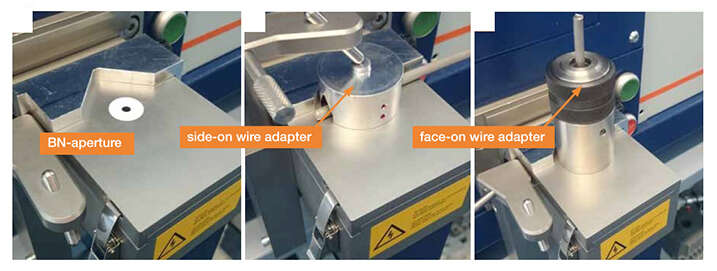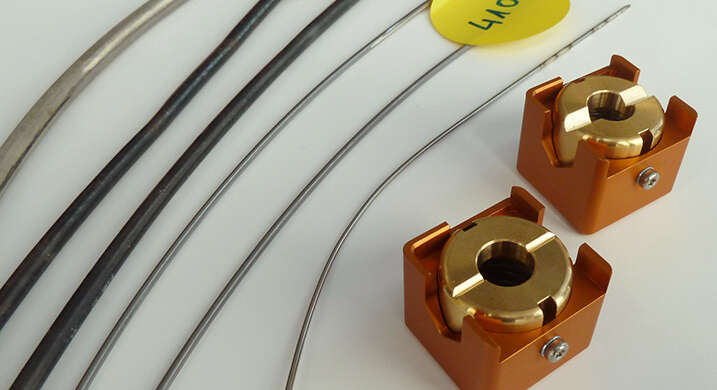We’ve hosted a webinar aimed specifically at non-ferrous melt analysis and our OES expert Jochen Meurs covered 5 key areas of non-ferrous OES. If you missed it, you can watch the recording here.
We gave those attending the opportunity to submit questions and these were excellent and required in-depth answers. In this article that cover the more practical aspects of preparing and analyzing your non-ferrous melt sample. These are the answers given by Jochen Meurs.
Question: The ASTM guidance for aluminum has a very specific sample mold description. Where do you get the mold described?
You can obtain a range of molds for different materials from Breitlaender. It is not exactly what ASTM is recommending, but these molds are the most common in my experience. They produce small samples that cool rapidly, so are excellent for minimizing segregation.
Question: What is the recommended machining depth for aluminum?
For a sample coming straight off the mold, we remove 0.1 — 0.25 mm, depending on whether the surface shows any irregularities. For a refresh grind, we go to a depth of 0.05 mm (50 µm). To remove burn spots, we mill 0.1 — 0.15 mm deep.
Question: What is the surface roughness requirements for aluminum?
I can only give you a rough guide of Ra = 1-3 µm. At this level, traces of the milling process are still visible. Please note that a mirror-like surface finish is not recommended because the spark might not attack and melt the surface properly.
Question: What concentration of hydrogen can you measure in an aluminum melt?
Hydrogen, oxygen and nitrogen are currently not measurable for aluminum-based materials. This is because reference samples with certified concentrations of these gases within aluminum are not available on the market. However, if you are interested and have samples for analyzing, we are happy to investigate the possibilities of measuring hydrogen in aluminum for you.
Our OE750 spectrometer measures hydrogen in titanium alloys, oxygen and nitrogen in steel and oxygen in copper alloys.
Question: How do you analyze low gauge samples <2 mm by OES?
For non-standard samples you can use an adaptor; this works well for thin wires where it is possible to measure material down to 1mm in diameter. Very small samples can be measured with a boron-nitrite ceramic disc insert; this reduces the spark stand hole to 5 mm. But you will lose analytical performance; precision and accuracy are usually compromised by using these adaptors. In some cases, such with wires with a diameter > 5 mm, the impact is very low. And as the ceramic disc contains boron and nitrogen, you can’t determine B and N at low concentrations. In this scenario, we can test these small specimens beforehand to recommend a method and provide performance data.
Question: How do you measure thin wire, for instance less than 1 mm in diameter?
There are two main methods of measuring wires: frontend (cross-section) or on the circumference of the wire. Measuring on the frontend is possible for wires down to 3 mm in diameter using a special adaptor that we supply. Below 3 mm in diameter, analysis is done on the side, or circumference, of the wire and depending on the material and performance required, we can measure wire down to 1 mm diameter. However, this very much depends on the ability to dissipate the heat of the burn. You can imagine that from a certain point, the material will be melted by the strong discharge and no measurement will be possible.
These types of measurement always require special adaptors and use of these adaptors compromises the analytical performance. For wire diameters of less than 3 mm, sometimes you will only be able to perform a grade identification analysis; precise and accurate analysis with full composition as you would get on a bulk sample, should not be expected.
I strongly recommend that if you are measuring fine wires, you check the specimens with our application team, they will advise on the level of performance you will obtain.
For wire diameters less than 1 mm, I recommend other analytical methods, such as XRF or LIBS, which don’t expose the sample to so much heat. Please see photographs and report below for more information.


If you’d like to see the recording of the live webinar Best 5 expert tips for optimal non-ferrous melt control with spark OES, you can watch it here.
In our new guide Optimal non-ferrous melt control with spark OES, we go into more detail on the optimum sample-taking process and preparation techniques to get reliable results first time when verifying non-ferrous melt chemistry. Download your copy by clicking on the link above or on the button below.
Get the guide Watch the webinar recording